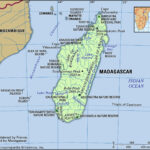Pacific Time is a commonly used term, but understanding exactly where it is and what it means can be a little confusing. This article will clarify the geographical areas that observe Pacific Time, and explain the nuances of Pacific Standard Time (PST) and Pacific Daylight Time (PDT). If you’re wondering “Where Is Pacific Time?”, you’ve come to the right place.
Delving into Pacific Standard Time (PST)
Pacific Standard Time (PST) is the standard time observed in the westernmost time zone of the contiguous United States and Canada. It’s also used in Baja California, Mexico. PST is defined as being 8 hours behind Coordinated Universal Time (UTC-8). This time zone is in effect during standard time, which typically runs from the first Sunday in November to the second Sunday in March.
Geographical Reach of Pacific Time
Pacific Time covers a significant portion of western North America. Specifically, it includes all or part of five US states and two Canadian provinces or territories. This makes it the third most populated time zone in the United States, stretching from Canada down to Mexico. To the east, Pacific Time borders the Mountain Time Zone.
During standard time, these regions observe PST. However, it’s important to note that when Daylight Saving Time (DST) comes into effect, Pacific Time transitions to Pacific Daylight Time (PDT).
Pacific Time: PST and PDT
The term “Pacific Time” is often used generically to refer to the time in these western regions. However, “Pacific Time” itself is not a specific time zone name that differentiates between standard time and daylight saving time. Instead, it acts as an umbrella term encompassing both PST and PDT.
- Pacific Standard Time (PST): Used during standard time (winter months).
- Pacific Daylight Time (PDT): Used during daylight saving time (summer months).
Therefore, when someone asks “where is pacific time?”, they are generally referring to the regions that observe either PST or PDT depending on the time of year. Just like other North American time zones such as Mountain Time (MT), Central Time (CT), Eastern Time (ET), and Atlantic Time (AT), Pacific Time is a common way to refer to the time in a specific geographical area without explicitly stating whether it’s standard or daylight time.
Areas Observing Pacific Time
To pinpoint “where is pacific time” geographically, here’s a breakdown of the regions that utilize Pacific Time, switching between PST in the winter and PDT in the summer:
-
United States:
- California
- Idaho (northern part)
- Nevada
- Oregon (most of state)
- Washington
-
Canada:
- British Columbia
- Yukon
-
Mexico:
- Baja California
It’s crucial to remember that while these locations generally observe Pacific Time, there can be exceptions and specific areas within these regions might adhere to different time zones. Always double-check the specific location if precision is needed.
Time Zones Sharing UTC-8 Offset
While PST is the primary time zone with a UTC-8 offset during standard time, it’s worth noting that other time zones also share this offset, though they may have different names. These zones are geographically located in different parts of the world. This highlights that “where is pacific time” specifically refers to the regions listed above, within North America, despite other areas globally potentially sharing the same UTC offset.
Conclusion: Locating Pacific Time
In summary, when you hear “Pacific Time,” it refers to a region in western North America encompassing parts of the US, Canada, and Mexico. This region observes Pacific Standard Time (PST) during winter and Pacific Daylight Time (PDT) during summer. Hopefully, this clarifies “where is pacific time” and provides a comprehensive understanding of this important time zone.

